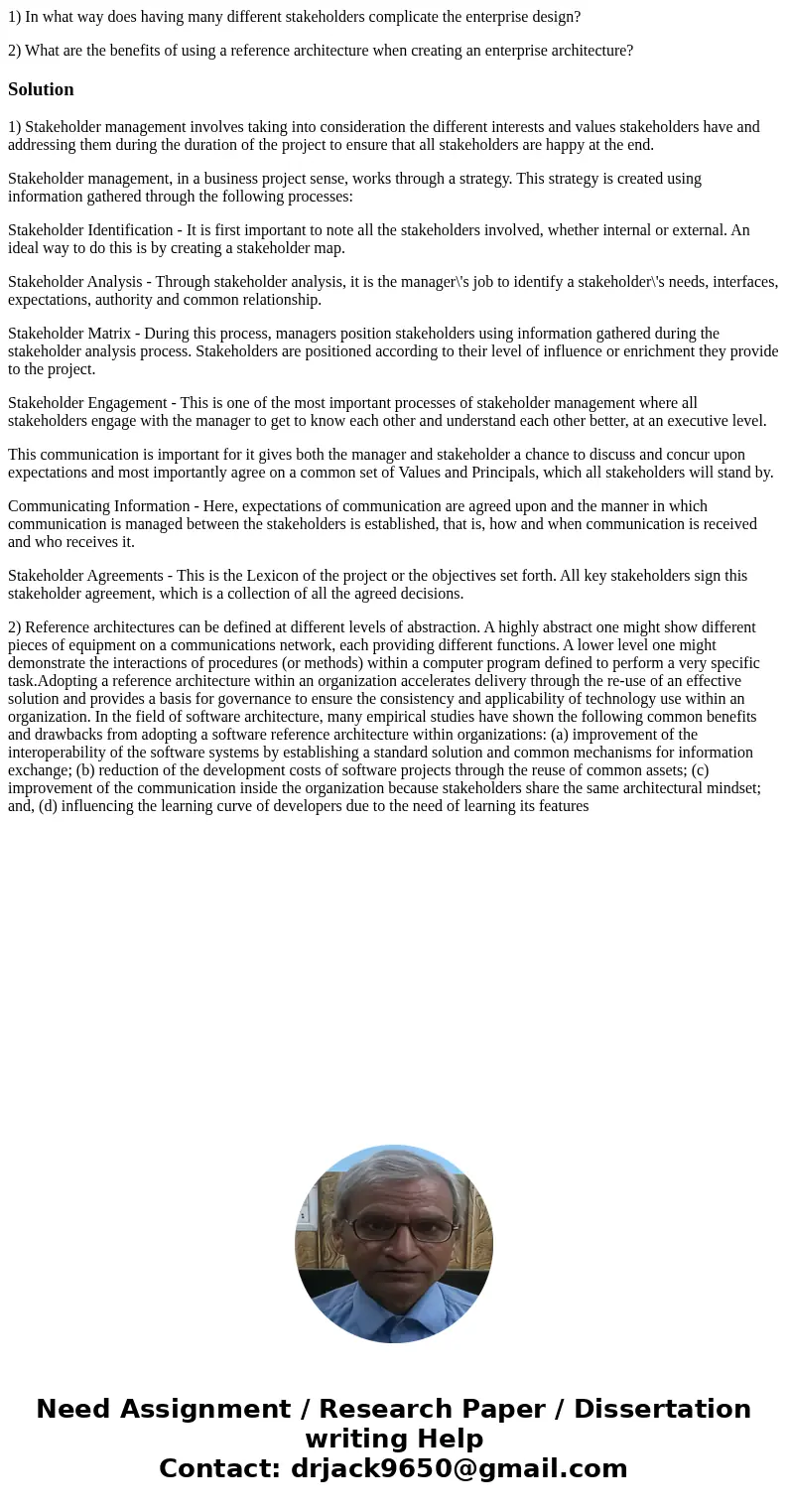1 In what way does having many different stakeholders compli
1) In what way does having many different stakeholders complicate the enterprise design?
2) What are the benefits of using a reference architecture when creating an enterprise architecture?
Solution
1) Stakeholder management involves taking into consideration the different interests and values stakeholders have and addressing them during the duration of the project to ensure that all stakeholders are happy at the end.
Stakeholder management, in a business project sense, works through a strategy. This strategy is created using information gathered through the following processes:
Stakeholder Identification - It is first important to note all the stakeholders involved, whether internal or external. An ideal way to do this is by creating a stakeholder map.
Stakeholder Analysis - Through stakeholder analysis, it is the manager\'s job to identify a stakeholder\'s needs, interfaces, expectations, authority and common relationship.
Stakeholder Matrix - During this process, managers position stakeholders using information gathered during the stakeholder analysis process. Stakeholders are positioned according to their level of influence or enrichment they provide to the project.
Stakeholder Engagement - This is one of the most important processes of stakeholder management where all stakeholders engage with the manager to get to know each other and understand each other better, at an executive level.
This communication is important for it gives both the manager and stakeholder a chance to discuss and concur upon expectations and most importantly agree on a common set of Values and Principals, which all stakeholders will stand by.
Communicating Information - Here, expectations of communication are agreed upon and the manner in which communication is managed between the stakeholders is established, that is, how and when communication is received and who receives it.
Stakeholder Agreements - This is the Lexicon of the project or the objectives set forth. All key stakeholders sign this stakeholder agreement, which is a collection of all the agreed decisions.
2) Reference architectures can be defined at different levels of abstraction. A highly abstract one might show different pieces of equipment on a communications network, each providing different functions. A lower level one might demonstrate the interactions of procedures (or methods) within a computer program defined to perform a very specific task.Adopting a reference architecture within an organization accelerates delivery through the re-use of an effective solution and provides a basis for governance to ensure the consistency and applicability of technology use within an organization. In the field of software architecture, many empirical studies have shown the following common benefits and drawbacks from adopting a software reference architecture within organizations: (a) improvement of the interoperability of the software systems by establishing a standard solution and common mechanisms for information exchange; (b) reduction of the development costs of software projects through the reuse of common assets; (c) improvement of the communication inside the organization because stakeholders share the same architectural mindset; and, (d) influencing the learning curve of developers due to the need of learning its features

 Homework Sourse
Homework Sourse